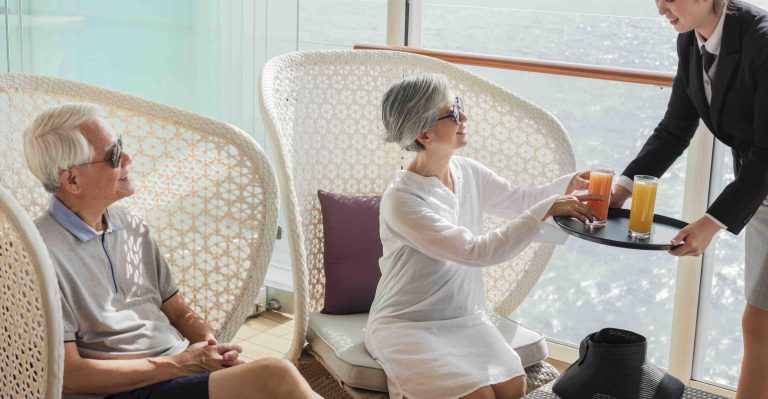The uncertainty surrounding cruise port re-openings has driven a most unusual revival: the cruise to nowhere.
In a recent interview with Skift.com, Michael Goh, president of Dream Cruises and head of international sales at Genting Cruise Lines, shared how the line is looking at cruises to nowhere once business resumes.
And it is an idea that could just take off across the world – including Australia, where state boarders may remain an issue.
P&O Australia, for instance, runs themed cruises which could easily be turned into a revival of the cruise to nowhere. And major lines with huge entertainment decks like resorts should have no problem convincing families that the ship IS the destination.
Because Genting Dream calls into Malaysia and Thailand, international sailings are dependent on when these nations reopen their borders and allow ships to enter their waters.
So small wonder they are among the first to consider the idea.
“We hope to start cruises to nowhere in July or August, and at least enable guests to have a good time or enjoy activities on board the ship,” he told the publication. “We are looking at very short cruises of two or three nights, then five nights, before we go on longer cruises.”
Mr Goh said the cruise ship itself is a destination. Short cruises don’t require port stops to support the cruise experience, because there are plenty of on-board activities.
Given the popularity of short cruises with Asians, and the fact that new ships are being built with more amenities than before, the cruise to nowhere model seems like a viable option to attract both new and loyal cruisers.
And Mr Goh maintained cruise ships were among the safest forms of holiday.
“If you go on a conventional holiday, you go to the airport and wait for a plane, and then go to two different countries, check into the first hotel, check out of the hotel to go to the next country, and repeat the process,” he explained.
In contrast, cruising requires checking in once to visit various destinations, thus making it a great option to travel through less channels.










If there aren’t any cruise ships berthed in Australia (majority of them being “berthed” outside Manila),our international borders being closed and the PM / Medical Officers stating will it will be ‘sometime” before the international borders being opened …. when can we expect to see a cruise ship in Australia?
I seriously doubt we will see one this side of next year,
More from Fremantle please, we don’t seem to be thought off as much as other cities in Aus.
Ingrid
Won’t happen for US since Homeland Security declared them a violation of immigration laws several years ago and shut them down. Unlikely the current anti-immigration Administration would choose to permit them.
I can’t wait, it would be lovely just to get on board even if it’s nowhere to go and just cruising
I totally agree more solo cabins. Charge each passenger a small surcharge for medical if needed. Encourage people to use there cabin toilet.. Your never far away from ur cabin… Still keep the buffet but serve people it takes no more staff than is at the bufett now… Of course washing which on my last cruise was encouraged anyway.. Abs I just love being on the ship so I don’t need to go on land…longer cruises for me are best… The crew gets to know you and you the crew…. Keep the shows every night and party with ur new friends
I think it would be helpful to a lot of solo passengers if there were a few more single cabins at lower than doubles prices or surcharges so that people like me could enjoy a cruise without the hefty prices.
Cruise to Nowhere use to be a nice weekend getaway in NYC. That was years ago and not new, but unclear as to why it ceased. It appeared to be cost effective and those that went, came back with positive comments.
I don’t recommend it as a replacement, due to many would like the experience of getting off in another country.
I love the idea of “CRUISES TO NOWHERE”! The ships have so many awesome amenities. And its all about relaxing too! This is a brilliant idea
Cruises to nowhere would be fine on a bigger ship because of all the activities onboard but the price would have to reflect “no port charges”. I actually did this on the first time I cruised on the “Oasis of the Seas” for 7 days. I wanted to experience the ships activities and it was very relaxing.
Having been on 3 South Pacific cruises from Australia in the last 3 years & while on those cruises, I witnessed very little compliance with passengers adhering to using hand sanitizers and crowding into dining venues onboard, social distancing onboard a ship with between 1500 – 3000 passengers on board, is virtually impossible. My biggest fear on these ships was becoming ill with Norovirus & being confined to an interior cabin for days, with so many passengers on cruise ships becoming ill & dying from Covid19, I will not be setting foot on a ship again, it’s not worth the risk
I travel Cunard because of the dancing. Not particularly interested in the ports of call. Would be quite happy to do a cruise to nowhere with a ballroom dance theme.
Why not kangaroo island
Yes we agree a cruise to no where appeals to us….. we have cruised for years and not all the ports have a great appeal any more…..
A big part of cruising for us is meeting new people, sharing experiences and meeting up for happy hour drinks before dinner and a good show…
In order to control and manage sickness on board cruiseships especally virus breakouts it is imperitive that passengers consult the medical staff when feeling unwell. Despite travel insurance many passengers are put off accessing the Medical Centre because of the high cost of each visit. If a small daily charge for each passenger was added to the cruise costs there would be ample funds available for the medical support and passengers would have no deterrent to seeking medical advice/assistance. For example a ship cruise for 14 days with 2000 passengers charged only $5 per day would realise $140,000.
A separate point, the zigzag queue lines cruisepassengers are forced to pass through, also at airports, are the most inefficient method of processing people. Look at any processing plant for food, bottles, cans etc and they all have parallel lines. A Departure Lounge area of 360 sq metres (40 m x 9 m) with a lane width of 1.5 m in zigzag format will require every passenger to walk 240 m before reaching the processing/check in desk. This takes considerably longer than the 9 to 49 m walked by passengers passing through a number of lanes equal to the number of processing desks. In the examle given it could be up to 5 times quicker and 5 times shorter distance.
I like the idea of cruises to nowhere. I am a single person so no family worries about calling in at various ports. When you see one, you’ve generally seen them all. In fact I go on cruieses more to enjoy the delights at sea. Others of course enjoy ports of call.